- Plant raspberry bushes in spring from April to May, but the early autumn season is good too.
- Select a sunny location with fertile, well-draining soil, or amend the soil before planting.
- Dig a hole as deep as needed, usually about 6 inches deep to cover the roots. Place the raspberry plant in the hole and cover it with soil to cover the roots with about 1 inch of soil above the roots. Tamp the soil and water thoroughly. Plant the canes about 2 feet away from each other as the roots will spread and send new shoots out over time.
- Mulch the plant with wood chips. Raspberries are perennials, meaning they come back after winter, and send new growth every year. Wood chips for perennials work best to preserve moisture in the soil and cool down the plants on hot summer days.
- Fertilize as needed following the guidance on the packaging of your chosen fertilizer, and water raspberry plants with about 1 inch of water weekly at the base of the plant.
- The berries grow on the second-year canes. In the first year, the cane grows and in the second year, it bears fruit.
- Remove the old, completely dry canes in early spring. Cut only the canes that have no new growth on them, no growth means the cane is dry and old ready to be removed.
- Harvest the fruit once the fruit is red or the color of the specific cultivar you grow should be.
- Inspect the plants periodically for any disease or pest infestation.
- To plant, choose varieties that are disease resistant to avoid issues with the plant in the future.
- Support raspberry canes with adequate support as needed.
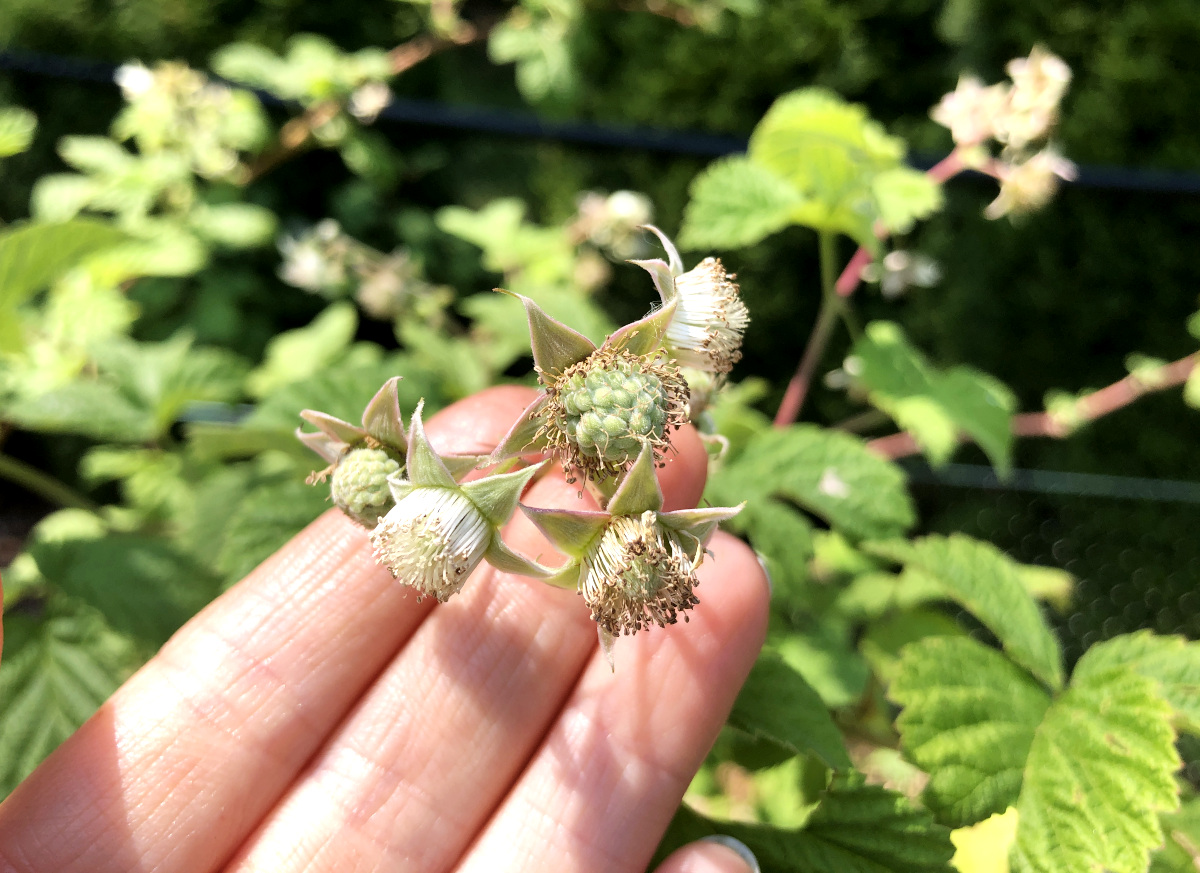
What is the best month to plant raspberries?
The best month to plant raspberry canes is early spring like April and May depending on your hardline zone.
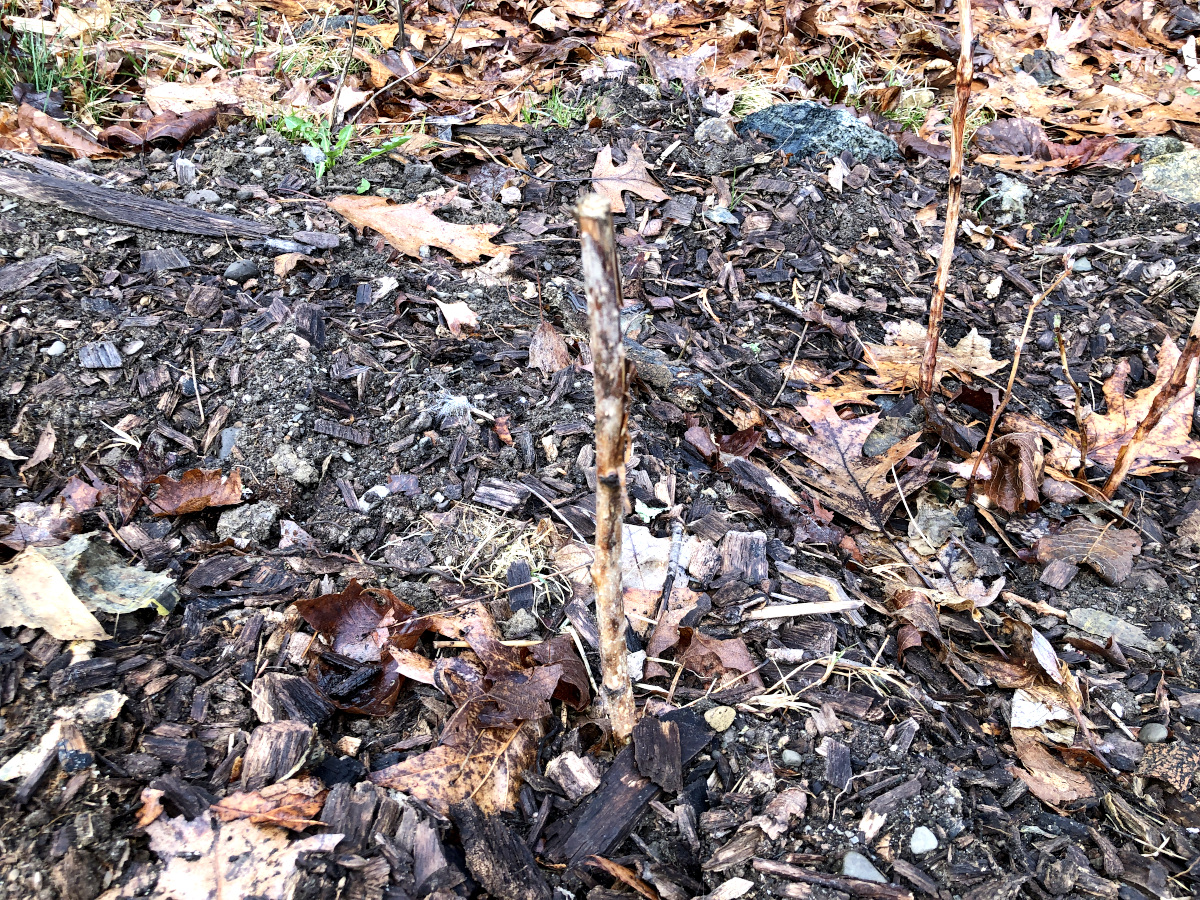
A GOOD READ: What do hardiness zones mean and how to determine yours
I planted my raspberry canes first week of April in my growing zone 6. When you get your raspberry canes shipped from the nursery they do not look like much. In fact, some look like dead branches. But a few weeks after being planted and watered regularly they send out new shoots and grow. Raspberry plants are very hardy, as they are perennial plants. When my bare roots raspberry canes first arrived, they looked like dry sticks, which is normal. They soon sent out new shoots.
Do you need 2 raspberry bushes to produce fruit?
Raspberries are self-pollinating fruit; therefore 2 bushes or canes are not needed. But for best and large production more canes are recommended.
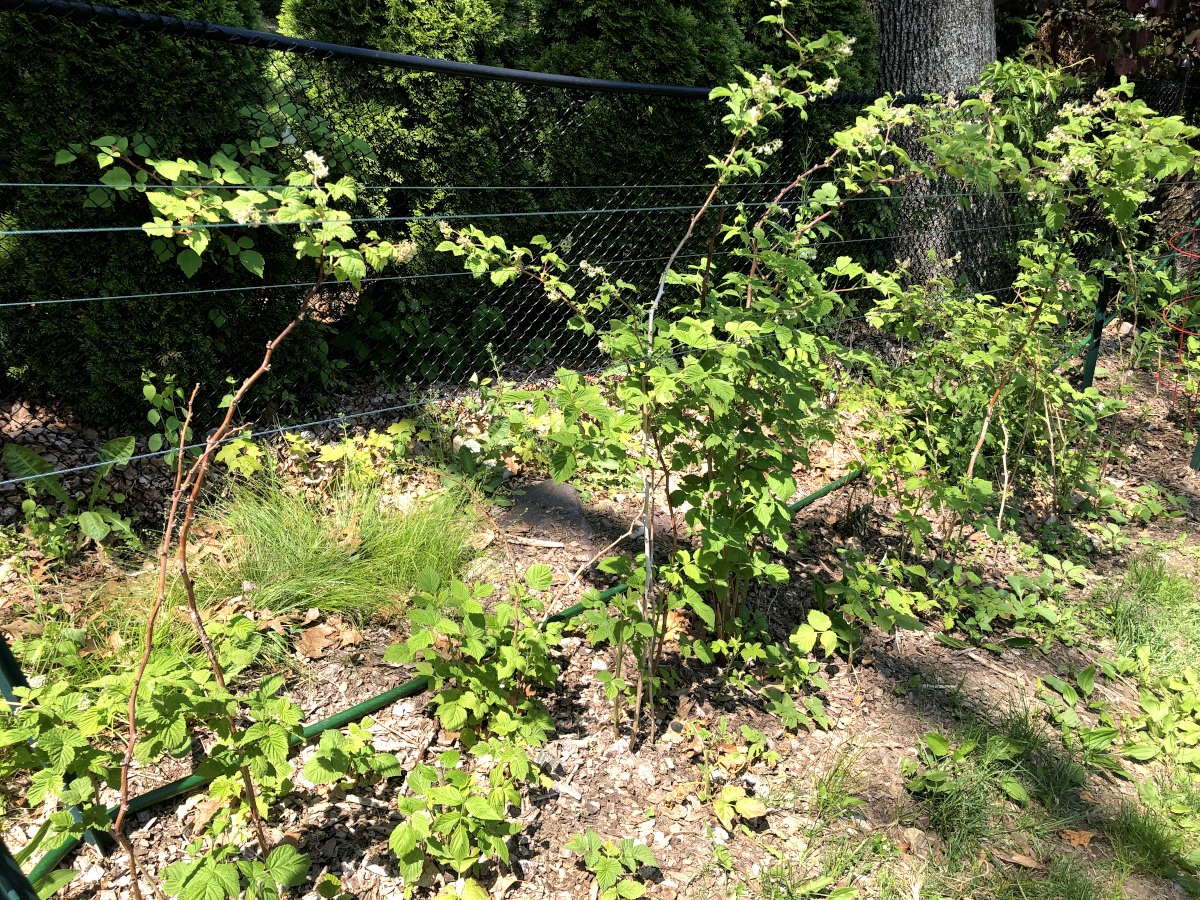
The first year I planted my raspberry canes I bought 3 of them. The second time to increase the harvest, I bought also 3 canes. All of them grow nicely and they send out new shoots, meaning new canes every year. Raspberry canes spread sending out new roots and new shoots every year. Plant them somewhere they can spread and create a beautiful raspberry patch. The more canes, the more berries.
Are raspberry canes sensitive to transplanting?
Raspberry canes transplant very well. Just loosen up the soil about half or a whole foot away from the cane with a shovel or garden fork. Then pull up the cane with as much root as possible. Plant in a new sunny location with fertile soil and water regularly so the plant roots well in its new spot.
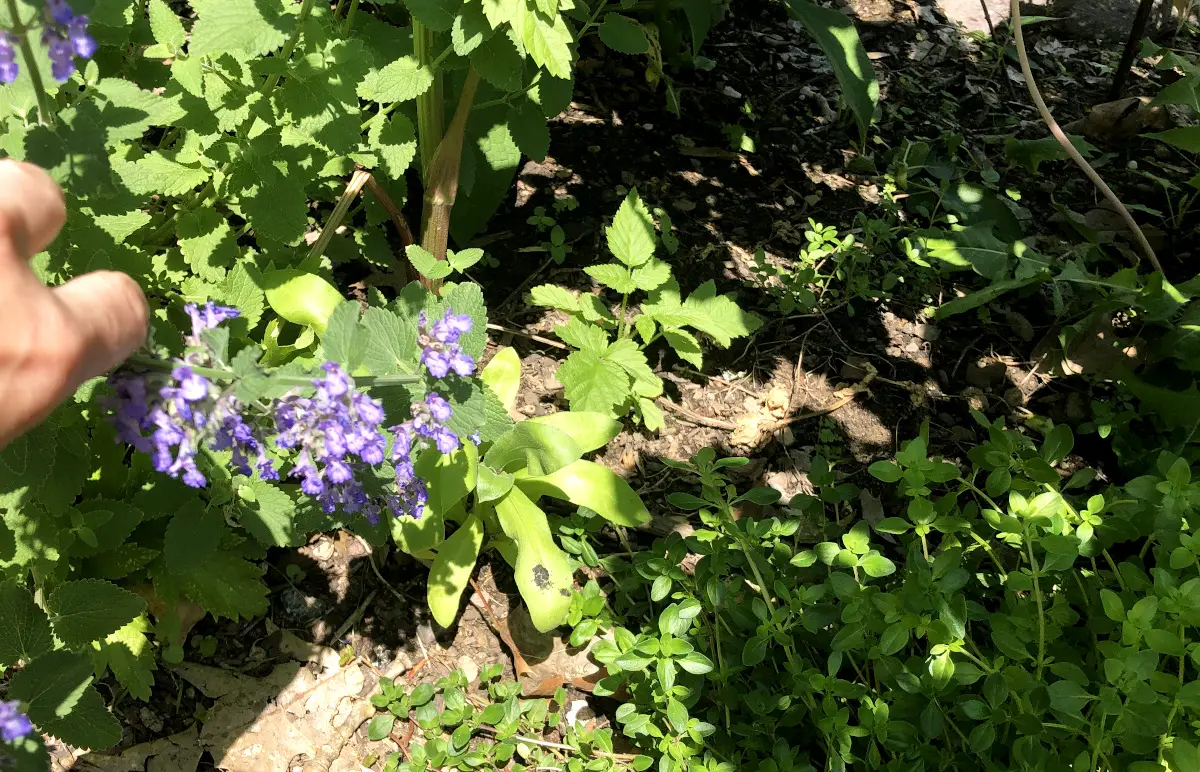
This year I moved my whole raspberry patch from one side of the garden to the other side, so I have lots of experience with transplanting raspberry canes and even digging and planting new sprouts. I simply loosened up the soil using a garden shovel or a fork and pulled up the plant with as many roots as I could. As the roots deep down broke, they soon grew new shoots. Thus, the whole spring and summer I keep on digging out new sprouts from the old patch I just moved elsewhere. It is no trouble, I love it! It means I have many new raspberry plants that will yield nicely next year! The mature canes that were dug out were transplanted very well. I lost perhaps 2 canes if that from dozens of plants but gained dozens of new ones sprouting from broken roots in the old patch.
As the raspberry canes get transplanted, they might look sad for couple of days but they perk right back up and thrive. All the 2nd year canes that were transplanted are now setting fruit, as you can see in the photos below. I took those photos just minutes ago!
Do raspberries grow better in pots or in the ground?
Raspberries grow best in the ground because they can send new roots and multiply easily. However, they are very hardy plants and grow well in pots as well. If the pot is what you have to grow the raspberries in, just do it! They will do great if proper care is provided.
I grow my raspberry patch in the ground because thankfully I have space for it. But if the pots were the only option I would grow them anyway, just because of how easy this plant is to grow. Raspberries are one of the easiest fruits to grow, multiply and care for. They are no drama plant and they thrive on neglect I would say. So far, I had no issues with them, no disease, and no pests. I call them: you plant and forget them. They come back every year and in larger numbers, who would not like that?
How do you prepare the soil for raspberries?
Select a level location and loosen up the soil. Amend native soil with organic matter like compost, worm castings, and inorganic amendments like perlite, vermiculite, and sand if the soil structure needs to improve. If using a slow-release fertilizer, it is good to add it to the soil before planting, while amending it.
I always mulch my raspberry patch with wood chips to preserve as much moisture as possible and to protect my soil and keep it healthy and plants cooled down in hot summer. Mulching helps to suppress weeds as well.
A GOOD READ: How to improve garden soil AND How to mulch garden beds
How long does it take for a raspberry plant to bear fruit?
The raspberry plant grows only leaves and grows tall the first year. It bears fruit in the second year.
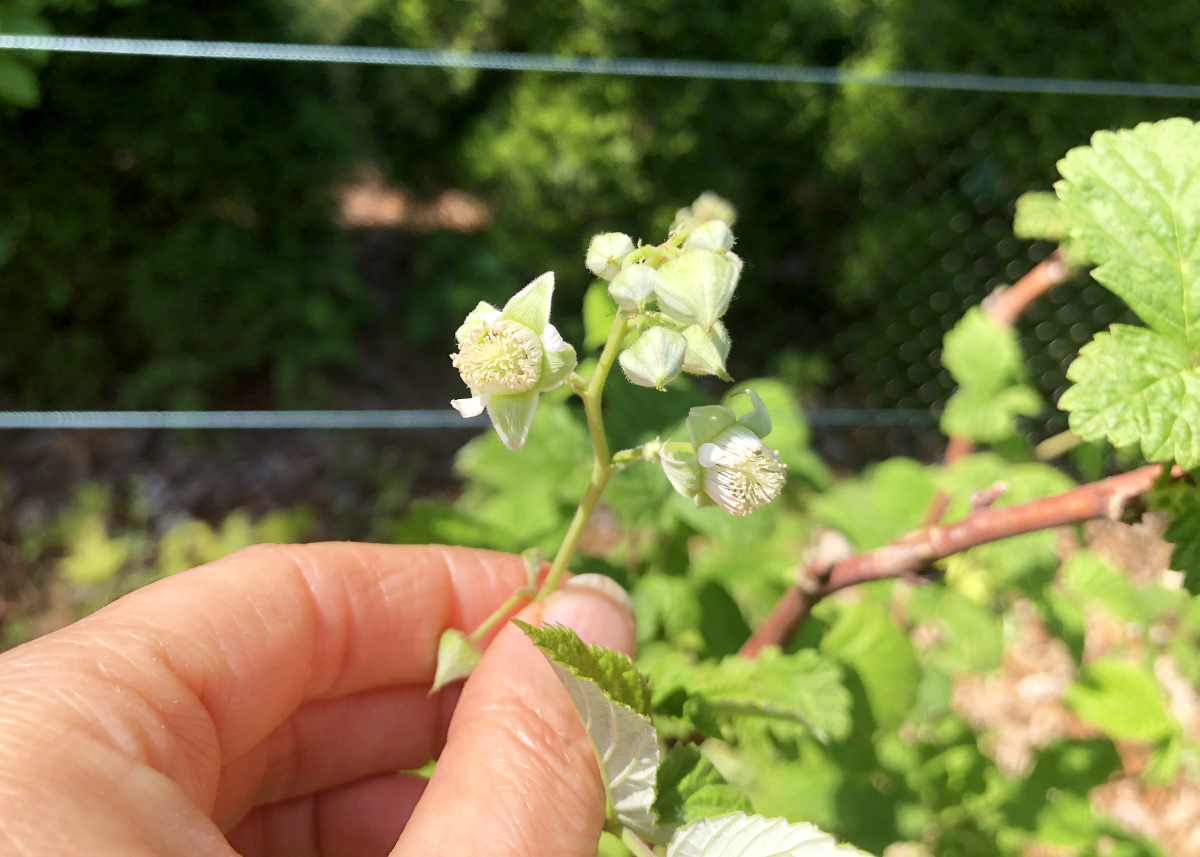
How to support or trellis raspberry plants
Use two posts on each side of the raspberry patch and tie a wire or garden tie from one side of the post to the other side creating horizontal lines on the front and back of the patch. Create about 3-4 levels of horizontal support.
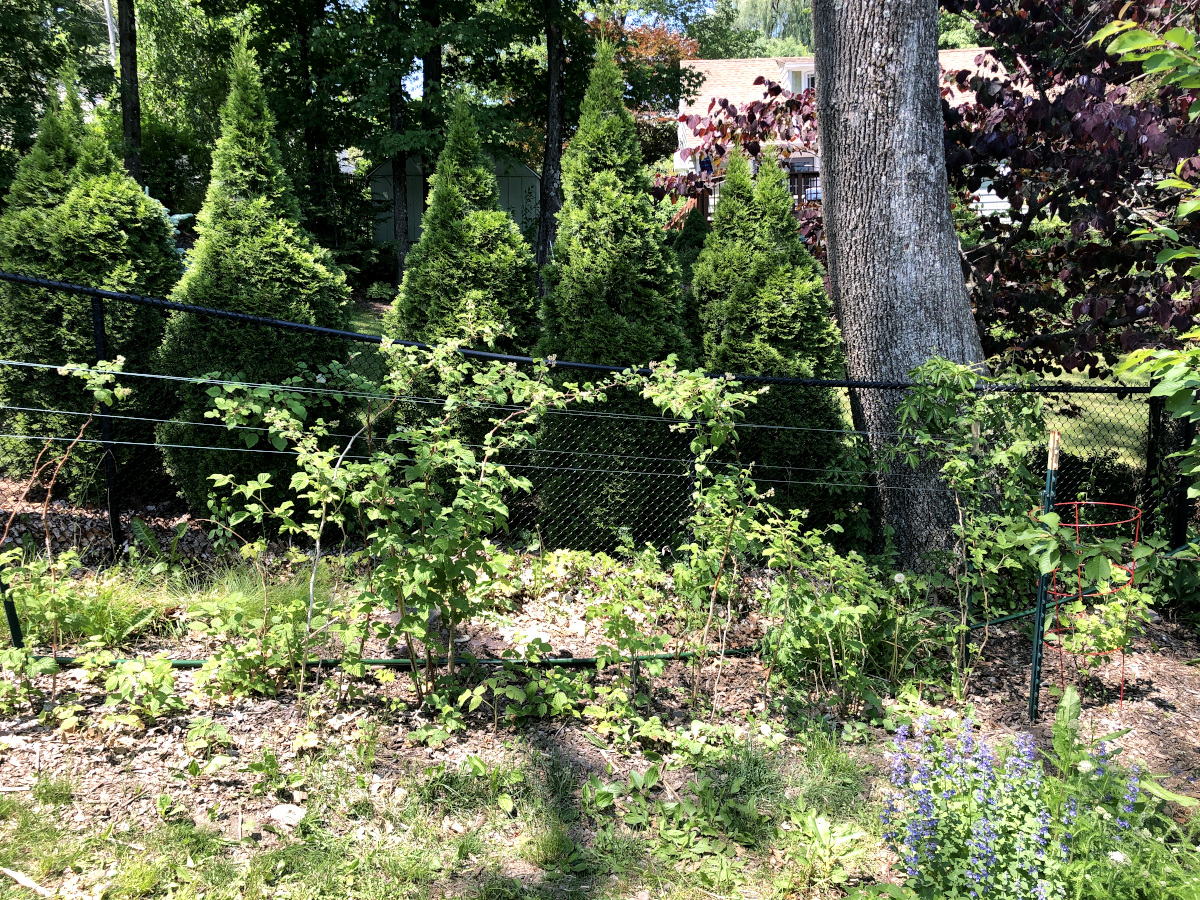
The photo below shows how I support my canes. However, I remember my beloved parent’s raspberry patch which was not supported at all. The patch was not a rectangle but rather a square so the canes supported each other as they grew densely.
Do raspberry bushes multiply?
Yes, raspberry bushes multiply by sending horizontal roots which send out new shoots every year.
Because raspberry canes multiply so well, they are a great garden investment. It is a fruit you buy once and grows for a lifetime. It is a pantry stocking garden must when it comes to the fruit.
For those who do not have fruit trees because they require extra care or space which you cannot provide for whatever reason, I would say go with bush and cane fruits like raspberries, blackberries, and strawberries. Raspberries and blackberries especially are very easy to grow and bear high yield once well established.
I do not grow fruit that required too much attention and does not yield much. I would rather have a patch of raspberries and blackberries that are disease resistant and require almost no care but yield plenty.
What is the best fertilizer for raspberry bushes?
The best fertilizer for raspberry bushes is aged animal manure or fertilizer rich in nitrogen, phosphorus, and potassium.
Every year I like to use only one fertilizer to feed my whole garden. I do not like to spend on multiple fertilizers. This year I am using this liquid concentrated fertilizer. So far, my garden looks very nice and I do not have any complaints providing the results.
If you do grow raspberries, I invite you to share with me and the readers on what variety you grow and why this one was your choice.
How to protect vegetable garden beds
How and when to water vegetable garden

